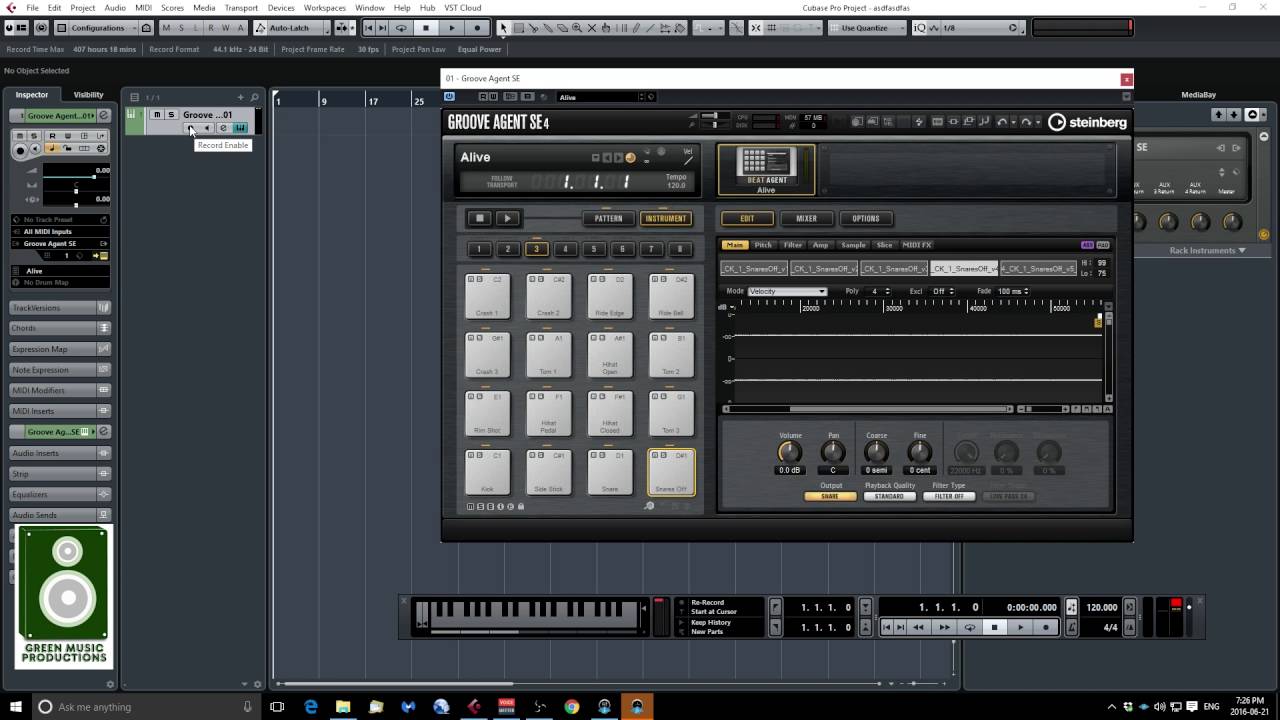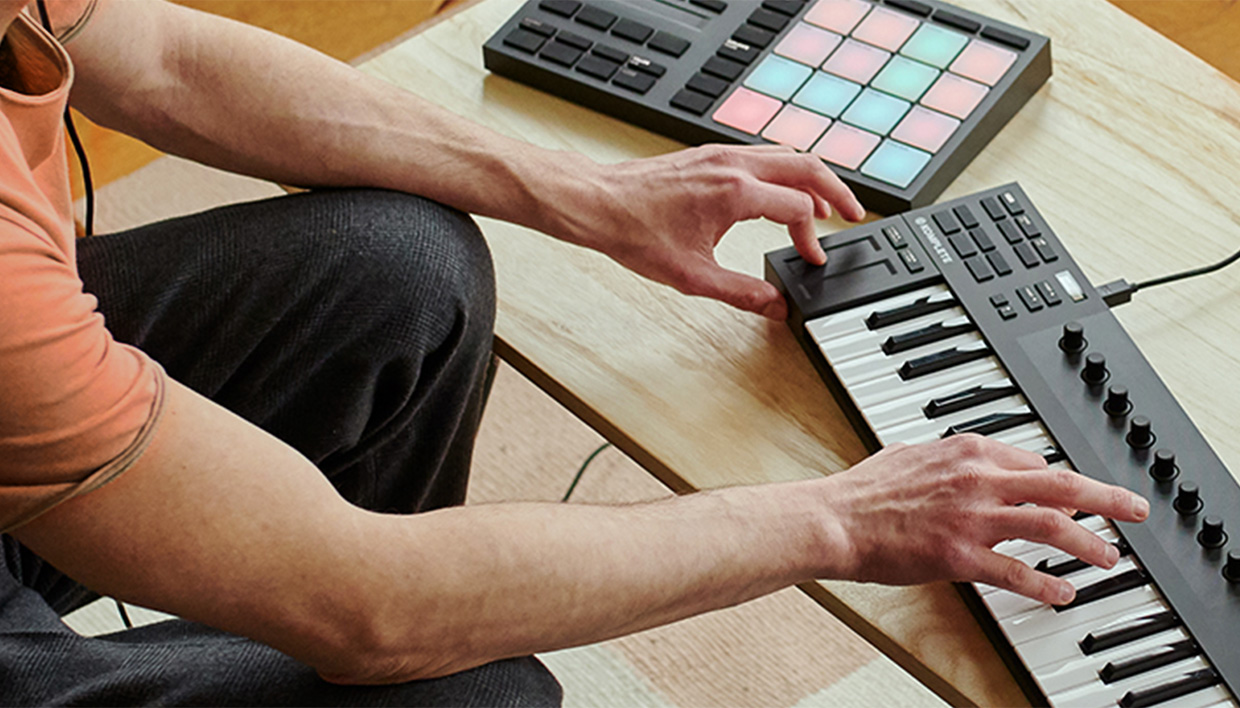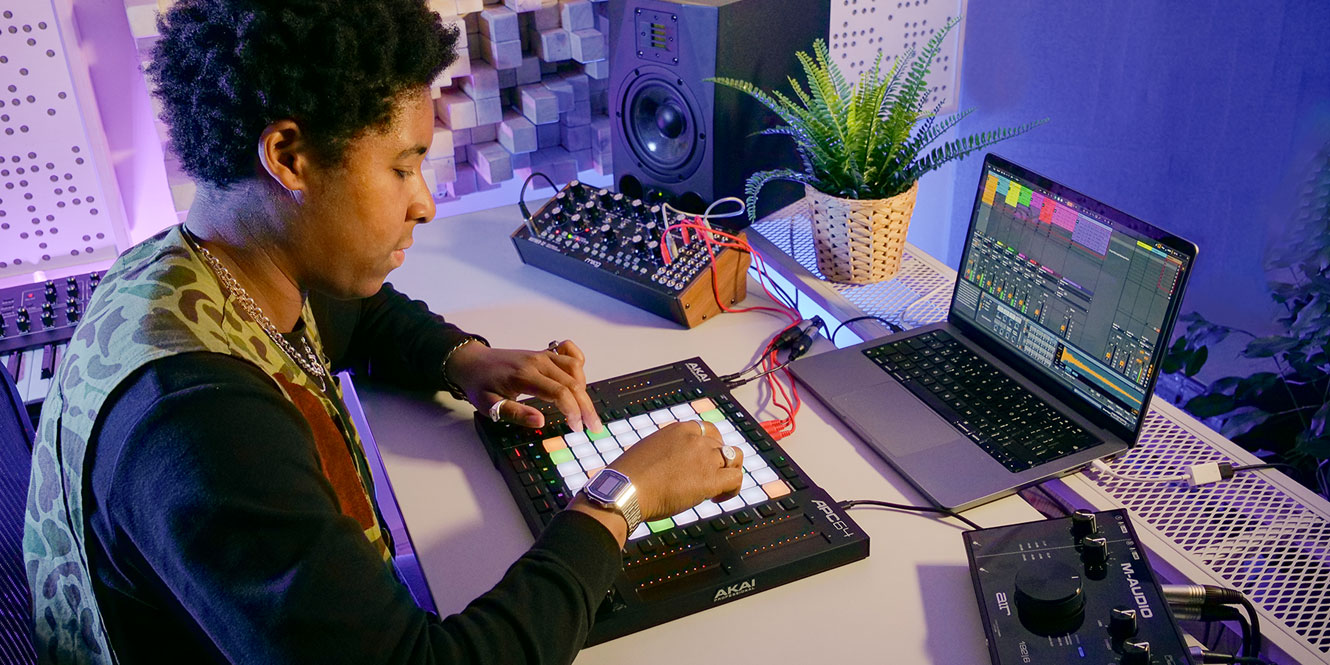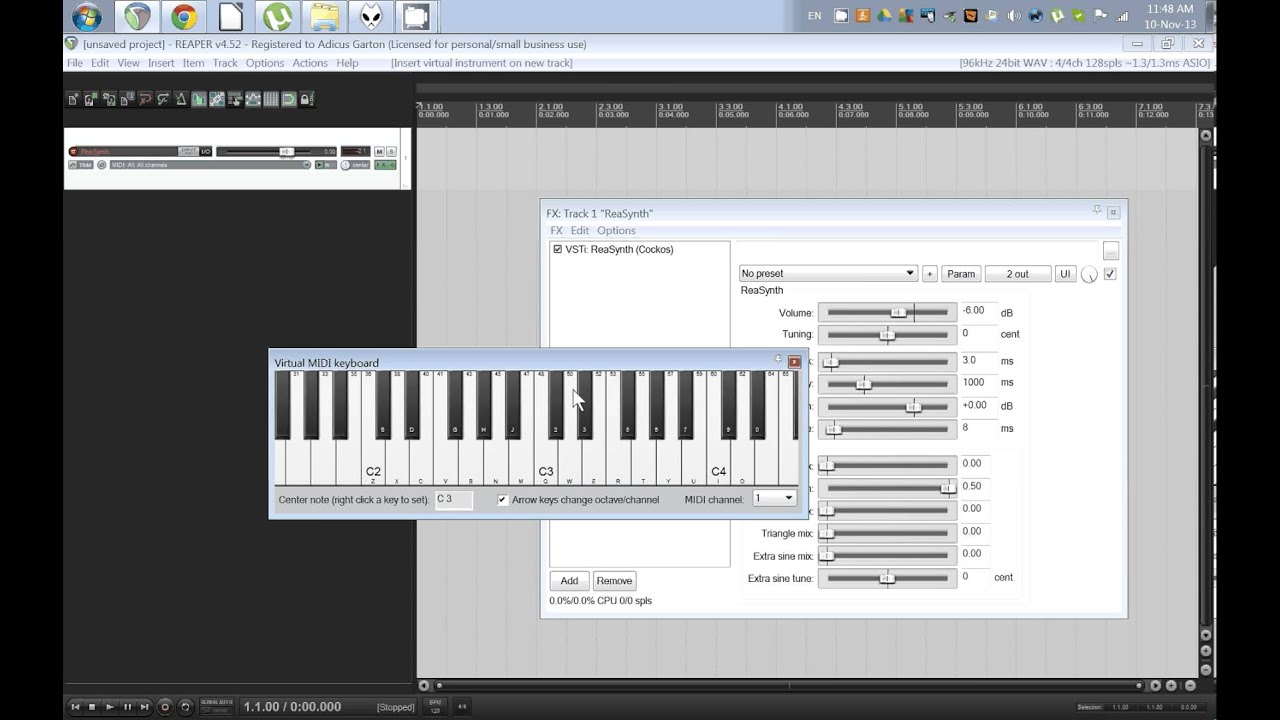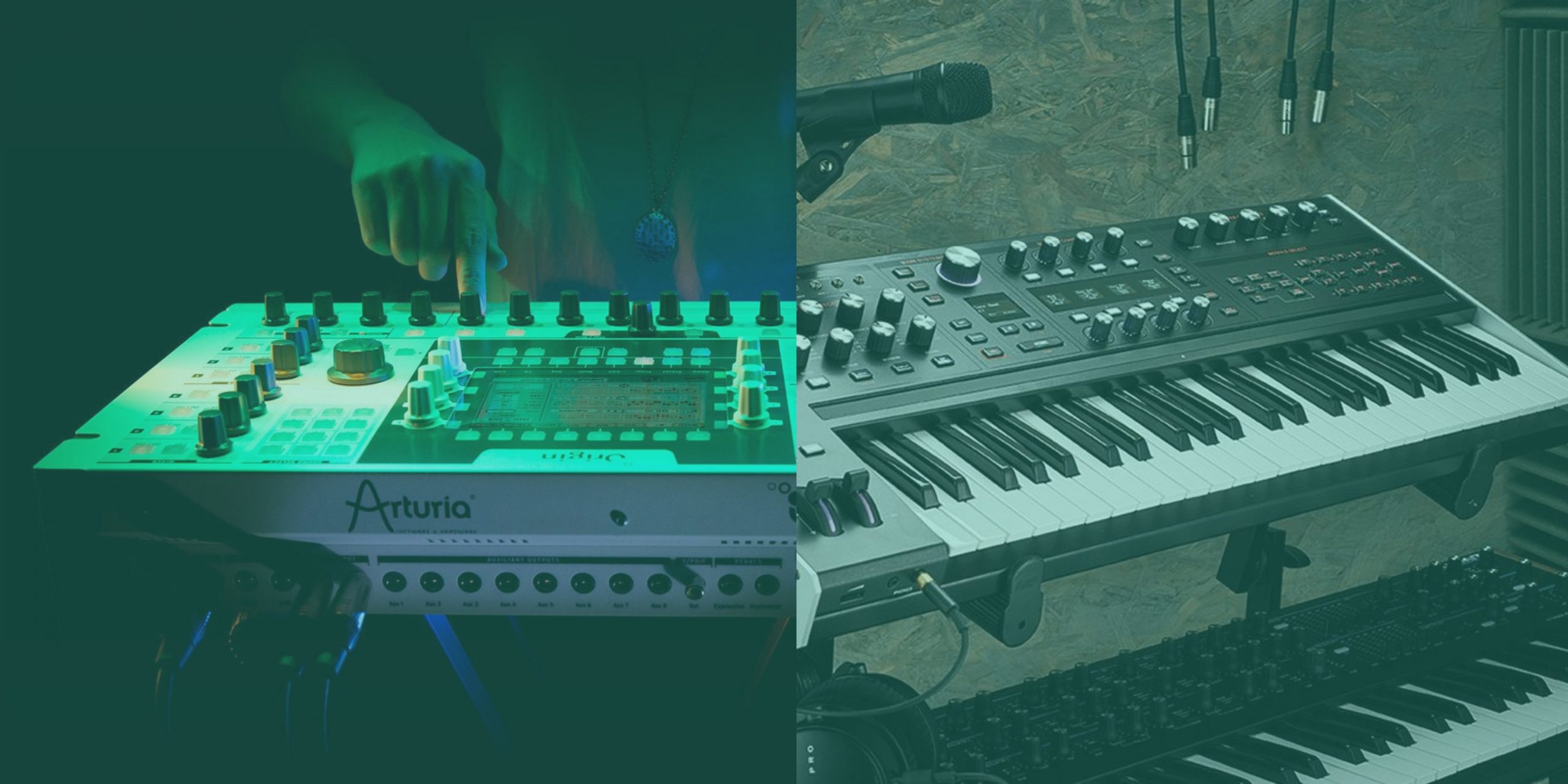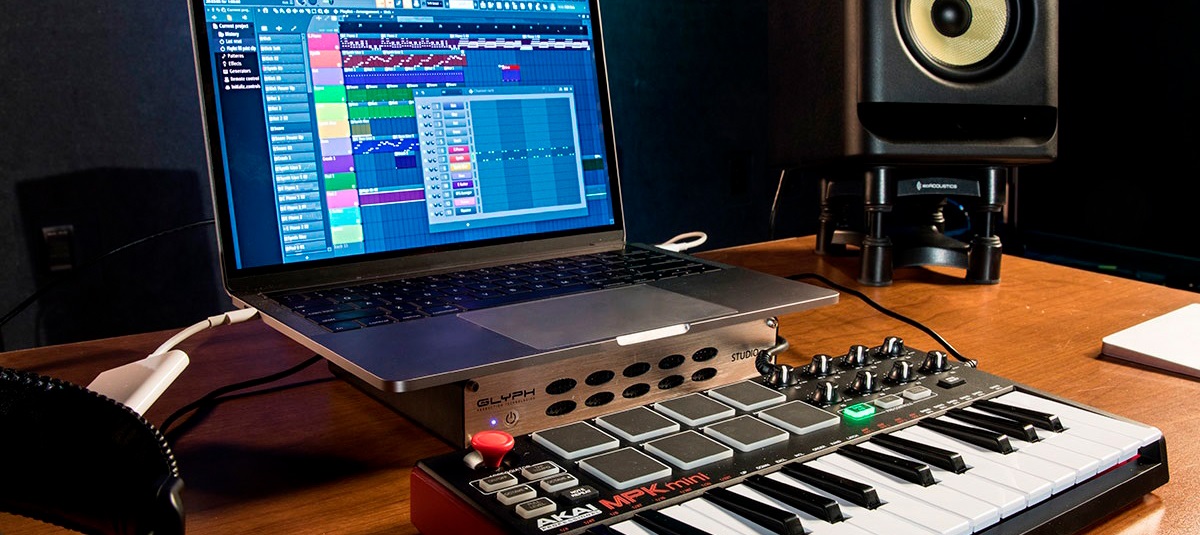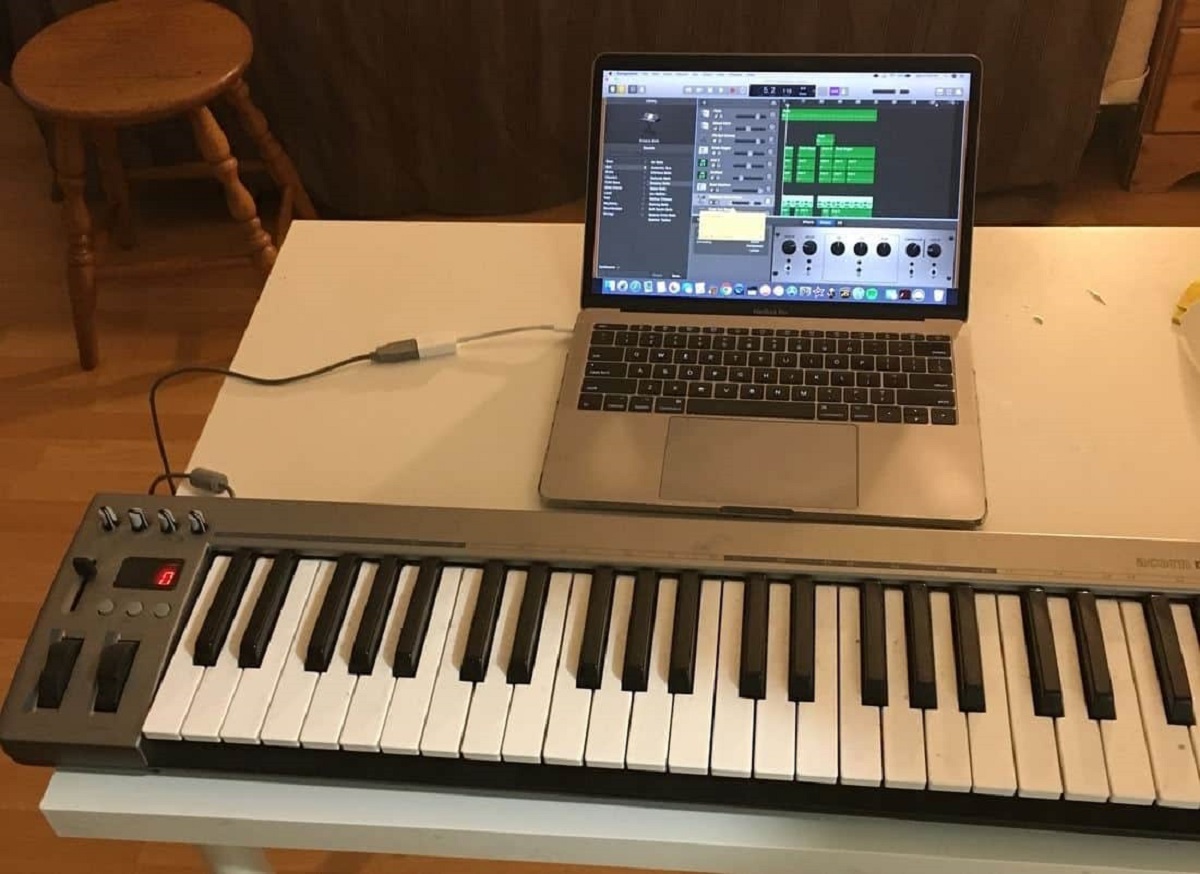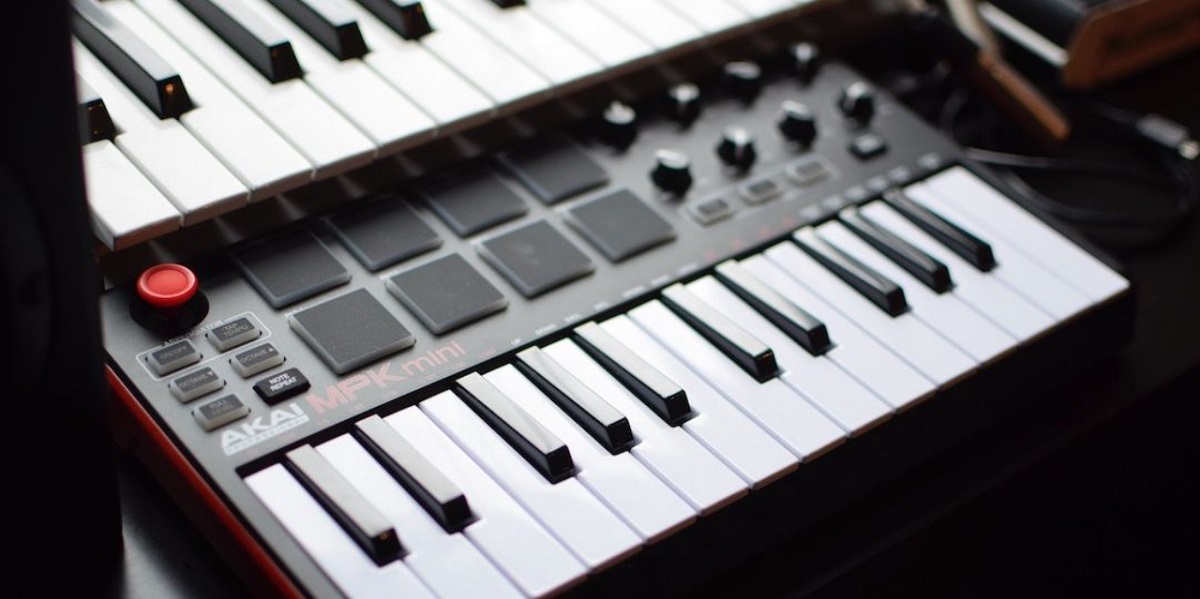Introduction
Are you a budding musician looking to record your own music with a MIDI keyboard? Whether you're a seasoned pro or just starting out, capturing your musical creations in real time can be an exhilarating and rewarding experience. In this comprehensive guide, we'll walk you through the essential steps to record music with a MIDI keyboard in real time, from setting up your equipment to fine-tuning your recordings.
Recording music with a MIDI keyboard allows you to translate your musical ideas into digital form, enabling you to manipulate and refine your compositions with ease. By leveraging the power of MIDI technology, you can unleash your creativity and produce professional-quality tracks from the comfort of your own home studio.
Throughout this guide, we'll explore the crucial aspects of this process, including selecting the right software, configuring your setup, and executing seamless real-time recordings. Additionally, we'll delve into the nuances of editing and fine-tuning your recordings, ensuring that your musical vision is translated into a polished final product.
Whether you're a solo artist, a producer, or a composer, the ability to record music in real time with a MIDI keyboard opens up a world of possibilities. By following the steps outlined in this guide, you'll be well-equipped to embark on your musical journey and bring your compositions to life with precision and artistry. So, let's dive in and uncover the key elements of recording music with a MIDI keyboard, empowering you to express your musical prowess with confidence and flair.
Setting up Your MIDI Keyboard
Before you begin recording music with your MIDI keyboard, it’s essential to ensure that your setup is optimized for seamless performance. Start by connecting your MIDI keyboard to your computer using a USB or MIDI cable, depending on the available connectivity options. Once the physical connection is established, you’ll need to configure the software settings to recognize your MIDI keyboard as the input device.
Most modern digital audio workstations (DAWs) support MIDI input, allowing you to integrate your keyboard effortlessly. Within your DAW’s preferences or settings menu, locate the MIDI input section and select your MIDI keyboard from the available devices. This step establishes the communication link between your keyboard and the recording software, enabling real-time data transmission.
Furthermore, it’s advisable to check for any available driver updates for your MIDI keyboard, as updated drivers can enhance compatibility and performance. Additionally, familiarize yourself with the specific functionalities of your MIDI keyboard, such as modulation wheels, pitch bend, and assignable controls, to leverage its full potential during the recording process.
Creating a conducive physical environment for your recording setup is equally important. Ensure that your MIDI keyboard is placed on a stable surface with adequate space for comfortable playing. Consider factors such as ergonomics and cable management to optimize your workspace and minimize potential distractions during recording sessions.
By meticulously setting up your MIDI keyboard and integrating it with your recording software, you lay a solid foundation for capturing your musical expressions with precision and fluidity. This seamless integration paves the way for a gratifying recording experience, allowing you to focus on your creativity without technical hindrances.
Choosing the Right Software
When embarking on the journey of recording music with a MIDI keyboard, selecting the appropriate software is paramount to realizing your creative vision. A digital audio workstation (DAW) serves as the central hub for capturing, editing, and arranging your musical compositions, making it crucial to choose a DAW that aligns with your workflow and artistic preferences.
Consider factors such as user interface, feature set, and compatibility when evaluating DAW options. Popular choices such as Ableton Live, FL Studio, Logic Pro, and Pro Tools offer diverse capabilities tailored to different production styles and genres. Assess your specific requirements, whether it’s seamless MIDI integration, robust audio editing tools, or comprehensive virtual instrument libraries, to identify the DAW that best suits your needs.
Furthermore, the MIDI capabilities of the chosen software play a pivotal role in facilitating real-time recording with your MIDI keyboard. Look for DAWs that offer intuitive MIDI mapping, flexible quantization options, and efficient MIDI editing functionalities, empowering you to capture expressive performances with ease.
Additionally, the availability of third-party plugins and virtual instruments can significantly augment your creative arsenal. Many DAWs support VST, AU, or AAX plugin formats, enabling you to expand your sonic palette with an array of virtual instruments, effects, and sound processing tools. Whether you’re seeking realistic emulations of classic hardware synthesizers or cutting-edge audio manipulation plugins, the versatility of available plugins can elevate the sonic character of your recordings.
Moreover, consider the scalability and future-proofing aspects of the chosen software. As your musical proficiency and production requirements evolve, having a DAW that accommodates advanced features and seamless project migration can be invaluable. Additionally, explore the availability of comprehensive tutorials, community support, and regular software updates to ensure a nurturing and progressive environment for your musical endeavors.
By carefully evaluating the features, compatibility, and long-term potential of different DAWs, you can make an informed decision that empowers you to harness the full potential of your MIDI keyboard and embark on a fulfilling recording journey.
Configuring Your Software
Once you’ve chosen the right software for recording music with your MIDI keyboard, it’s essential to configure the settings to optimize the recording process and streamline your workflow. Begin by accessing the preferences or settings menu of your digital audio workstation (DAW) to customize the MIDI input and output parameters.
Within the MIDI settings, ensure that your MIDI keyboard is correctly identified and assigned as the input device. Most DAWs allow you to map MIDI controllers, such as knobs, faders, and pads, to specific functions within the software, offering a personalized and tactile approach to music production. Take advantage of these mapping capabilities to tailor your MIDI keyboard’s controls to suit your preferred recording and editing workflows.
Quantization settings play a crucial role in refining the timing and rhythmic accuracy of your recorded performances. Experiment with different quantization options within your DAW to align note events to the desired rhythmic grid while preserving the natural feel of your playing. Balancing quantization strength with musical expression is key to achieving a polished and dynamic recording.
Furthermore, explore the MIDI editing features of your software to fine-tune recorded performances and manipulate MIDI data with precision. Functions such as velocity scaling, note length adjustment, and MIDI CC (continuous controller) editing empower you to shape the nuances of your musical phrases, adding depth and emotion to your recordings.
It’s also beneficial to familiarize yourself with the routing and signal flow capabilities of your DAW, especially when integrating virtual instruments and MIDI effects. Understanding how MIDI data is routed within your software enables you to orchestrate complex arrangements, layer multiple instrument tracks, and experiment with creative MIDI processing techniques to enhance your musical productions.
Lastly, consider creating custom templates within your DAW that encapsulate your preferred MIDI keyboard settings, track configurations, and plugin chains. Templates provide a consistent starting point for new projects, streamlining your workflow and allowing you to dive into the creative process without repetitive setup tasks.
By configuring your software to harmonize with your MIDI keyboard and musical preferences, you establish an environment that fosters creativity and efficiency, laying the groundwork for capturing compelling and expressive recordings in real time.
Recording in Real Time
As you embark on the exhilarating process of capturing music with your MIDI keyboard in real time, it’s essential to approach the recording phase with a blend of technical proficiency and artistic spontaneity. Whether you’re laying down melodic passages, crafting intricate harmonies, or sculpting rhythmic patterns, real-time recording offers a direct channel for translating your musical ideas into tangible digital expressions.
Prior to initiating the recording, ensure that your MIDI keyboard is properly connected and recognized within your digital audio workstation (DAW). Create a new MIDI track within your project, assigning the MIDI input to your keyboard and configuring the desired recording parameters, such as track monitoring, input quantization, and recording count-in options.
When the stage is set, take a moment to immerse yourself in the musical context of your composition. Whether you’re performing solo piano pieces, electronic dance sequences, or intricate orchestral arrangements, establishing a mental connection with the essence of your music sets the tone for an authentic and emotive performance.
As you commence the recording, embrace the fluidity of real-time expression while maintaining an awareness of technical considerations. Pay attention to nuances such as dynamic variations, articulations, and pedal movements, infusing your performance with the subtleties that breathe life into the music. Embrace imperfections as part of the human touch, knowing that they contribute to the organic charm of a live performance.
During the recording process, leverage the real-time control features of your MIDI keyboard to modulate parameters, trigger sound effects, or manipulate virtual instrument articulations. Whether it’s adjusting filter cutoff frequencies, applying pitch bends, or triggering rhythmic arpeggios, these expressive gestures add depth and character to your recordings, elevating them beyond mere note sequences.
As the recording unfolds, maintain a sense of musical narrative and continuity, allowing phrases to breathe and motifs to evolve naturally. Embrace spontaneity while staying attuned to the overarching structure of your composition, striking a balance between improvisational freedom and compositional cohesion.
Once the real-time recording session concludes, take a moment to reflect on the emotive essence captured within the performance. Celebrate the unique moments of musical expression that have been immortalized in digital form, knowing that each recording encapsulates a snapshot of your artistic journey.
By embracing the artistry and technical finesse of real-time recording with your MIDI keyboard, you infuse your musical creations with authenticity and vitality, forging a profound connection between your creative vision and the tangible realm of recorded sound.
Editing and Fine-Tuning
After the exhilarating process of real-time recording with your MIDI keyboard, the subsequent phase of editing and fine-tuning allows you to sculpt and refine your musical performances with precision and artistry. This stage serves as a canvas for enhancing the expressive nuances captured during recording, ensuring that your compositions resonate with clarity and emotional impact.
Begin by reviewing the recorded MIDI data within your digital audio workstation (DAW), examining the timing, velocity, and phrasing of individual notes and passages. Utilize quantization tools judiciously to align note events with rhythmic precision, while preserving the natural ebb and flow of your performance. Strike a balance between rhythmic accuracy and humanized feel, allowing the musical gestures to breathe and resonate authentically.
Delve into the realm of velocity editing to modulate the dynamic intensity of individual notes, imparting a sense of musical expression and articulation. Adjusting velocity levels empowers you to accentuate melodic motifs, emulate the nuances of acoustic instruments, and imbue your compositions with a compelling sense of musicality.
Explore the realm of MIDI CC (continuous controller) data to manipulate parameters such as modulation, expression, and sustain, infusing your recordings with a rich tapestry of sonic textures and tonal variations. Whether it’s shaping the timbral characteristics of virtual instruments or adding expressive swells to melodic phrases, MIDI CC editing offers a versatile palette for sonic sculpting.
Furthermore, consider the potential of MIDI editing tools within your DAW to refine note lengths, adjust pitch bends, and craft intricate musical arrangements. These tools empower you to transcend the limitations of traditional recording methods, offering a canvas for reshaping and reimagining your musical performances with surgical precision.
As you navigate the landscape of editing and fine-tuning, maintain a holistic perspective on the overarching musical narrative. Strive to preserve the emotive essence and spontaneity captured during the real-time recording, allowing technical refinements to complement, rather than overshadow, the raw emotional impact of the performance.
Engage in iterative cycles of playback, analysis, and refinement, allowing your compositions to evolve organically as you iteratively refine the subtleties and intricacies embedded within the recordings. Embrace the iterative nature of the editing process, knowing that each adjustment brings your musical vision closer to its full realization.
By embracing the artistry of editing and fine-tuning, you elevate your musical recordings to a level of refined craftsmanship, ensuring that every note, gesture, and sonic contour resonates with clarity and emotional depth, enriching the sonic tapestry of your compositions.
Conclusion
Congratulations on embarking on the enriching journey of recording music with a MIDI keyboard in real time. Throughout this guide, we’ve navigated the essential steps, from setting up your equipment to capturing expressive performances and refining them with finesse. As you immerse yourself in the realm of real-time recording, remember that the heart of the process lies in the seamless convergence of technical proficiency and artistic expression.
By meticulously configuring your MIDI keyboard and software, you’ve established a harmonious environment that empowers you to capture your musical ideas with precision and fluidity. The synergy between your creative vision and the technological tools at your disposal forms the cornerstone of your recording endeavors, allowing you to articulate your musical narrative with authenticity and depth.
As you navigate the landscape of real-time recording, embrace the spontaneity and emotive essence of live performance, knowing that each musical gesture encapsulates a moment of artistic revelation. Whether you’re crafting intricate melodies, sculpting dynamic rhythms, or painting sonic landscapes, the act of real-time recording serves as a conduit for channeling your creative prowess into tangible sonic expressions.
Furthermore, the realm of editing and fine-tuning offers a canvas for refining and shaping your musical performances with meticulous attention to detail. Engage in this phase with a discerning ear and a nurturing spirit, allowing the emotive essence captured during real-time recording to shine through while refining the subtleties that elevate your compositions to a level of refined craftsmanship.
As you continue to hone your skills and explore the boundless possibilities of MIDI-based music production, remember that each recording represents a chapter in your artistic odyssey. Embrace the imperfections, celebrate the moments of creative revelation, and allow your musical journey to unfold organically, guided by a passion for sonic exploration and self-expression.
May the insights gleaned from this guide serve as a compass for your future recording endeavors, empowering you to channel your musical ingenuity with confidence and artistry. Whether you’re a solo artist, a producer, or a composer, the realm of real-time recording with a MIDI keyboard beckons as a realm of limitless creativity and sonic discovery.
So, as you venture forth into the realm of real-time recording with your MIDI keyboard, may your musical odyssey be marked by boundless inspiration, resonant expressions, and the enduring joy of bringing your compositions to life with the power of real-time recording.









